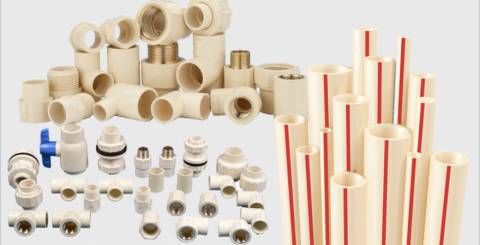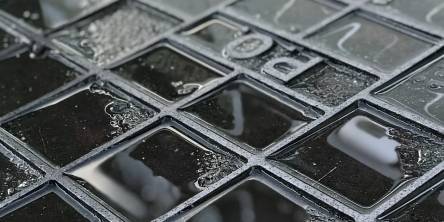Selecting the Pipelines Prepared for the Plumbing of Cold and Hot Water in Winters

During winters, we all prepare ourselves well for the chilly weather. But we never realise the damage that winters can cause to the traditional piping systems that are being used. In winters, the pipes not only have to suffer the flow of cold water from the tanks, but they’re also subjected to the heated water flow from the geyser and other water heating devices.
Due to these reasons, it becomes necessary to think before installing piping systems. There are many options available in the market for separate purposes, and each one has its own pros and cons. This gives us a wide variety to choose from but also requires knowledge of piping systems.
Galvanised Pipes
The traditional pipes that were used in residential areas and commercial buildings are not proven effective for plumbing with hold and cold waters. These are the galvanised pipes; they’re not highly corrosion-resistant, nor can they be used for the transportation of potable water. Moreover, extremely hot and cold water can damage the pipes from inside. The galvanised pipes can also form clogs and leach the water. Due to so many drawbacks, they are not preferred for plumbing nowadays.
Copper Pipes
Copper pipes can be a good option for plumbing in winters. They can withstand extreme hot and cold temperatures. Apart from this, they are very reliable and can last for more than 50 years. Copper pipes do not leak or corrode, nor can they pollute water as bacteria cannot invade these pipes. They can be recycled and are easily available. The few drawbacks it has include the high cost and other environmental concerns regarding the copper mining projects.
Brass pipes
Brass pipes were used as a cheaper alternative to copper pipes. The problem with these pipes was that brass contained lead, and it is one of the biggest health hazards known to man. Later the industry shifted to lead-free brass, but these brass pipes are expensive.
PEX pipes
Cross-Linked Polyethylene pipes, also known as PEX, are one of the favourites when it comes to hot water plumbing. These pipes are resistant to rust and corrosion. They can last forever until they don’t break somehow. These pipes are very flexible and easy to install. They do not require any soldering. It can perfectly suit the winter season as it can withstand extreme hot and cold temperatures. Also, they’re more cost-effective than copper pipes. The PEX pipes do have some major drawbacks, like they cannot be used outdoors as they can be damaged by sunlight. Some of these pipes can also cause bad taste and odour in water.
CPVC Pipes
CPVC (Chlorinated Polyvinyl Chloride) pipes are made from the same element as PVC (Polyvinyl Chloride) pipes, but CPVC pipes are chlorinated, and thus, they can be used for transporting hot and cold water without being damaged. If both of these materials are compared cost-wise, then CPVC is more expensive, but there are numerous benefits. The CPVC pipes are available in two sizes, Nominal Pipe Size (NPS) and Copper Tubing Size (CTS), whereas the PVC pipe manufacturers provide the pipes only in one size, i.e., NPS.
The CPVC pipes also provide many other benefits like long life as it does not corrode or rust, and it can handle the high pressure of water. The pipe is easy to move and install as it is lightweight, costs less than other metal materials. But the one clear advantage over CPVC over other piping materials is that it can withstand high temperatures. These pipes can easily take up to 200-degree Fahrenheit temperature. Thus, it is also used by water tank manufacturers. But, the only disadvantage of this material is that it can break down as a result of prolonged exposure to sunlight.
Now that we are equipped with enough knowledge about the types of plumbing pipes, their purposes, and their advantages and demerits, we can choose pipes for the chilling winter. Do keep these pros and cons in mind the next time you pick a pipe.
Similar Articles
Learn how a tidy home boosts mental health, reduces stress, improves productivity, and enhances well-being with simple, practical cleaning tips.
Have you ever harboured dreams of constructing your dream home filled with bespoke designs, carefully selected fittings and high-quality finishes? Have you ever fretted over the durability, aesthetics, and overall quality of your construction project? Are you constantly in search for the perfect balance between beauty and strength?
Cockroaches are one of the most common pests found in homes and businesses, and they are known for their resilience and ability to thrive in even the most unsanitary conditions. These pests can quickly infest kitchens, bathrooms, and other areas, spreading bacteria, allergens, and other harmful pathogens.
A well-maintained yard drainage system is key to preserving the beauty and health of any property. Poor drainage can lead to standing water, soil erosion, and even foundational damage to structures over time.
Keep your seaside home in top shape with these 4 expert tips! Learn about weatherproof materials, smart maintenance, and managing coastal challenges effectively.
Explore the future of roofing! Discover energy-efficient materials, smart systems, and sustainable designs reshaping modern home construction trends.
HVAC stands for heating, ventilation, and air conditioning. These all-in-one systems keep your home comfortable and improve air quality throughout a building. Often used in commercial buildings, HVAC units are increasingly used in residential buildings.
Safeguard your home after storms with timely roof repairs. Detect damage early, choose durable materials, and rely on a pro for lasting protection and peace of mind.
Learn how to balance a clean home and family life with these 6 practical tips to manage clutter, involve kids in chores, and set realistic expectations.









